The market-oriented reforms and opening-up policies introduced in China in the early 1980s marked the beginning of the country’s “Great Transformation.” The planned economy, portrayed as a rigid and inefficient system, was destroyed and replaced by market coordination. The ruthless marketization process not only privatized countless state-owned enterprises, but also fundamentally reshaped employment relations, replacing the old relation characterized by life-long employment and fixed wages with one based on markets and temporary contracts. By the late 1990s, when China was fully integrated into the world economy as a semi-peripheral country, an immense pool of fully or semi-proletarianized cheap labor emerged, ready for exploitation in the capitalist world system.
These cheap laborers are the primary force behind China’s economic expansion. However, after decades of rapid growth, labor shortages have become a pressing issue. The working-age population (WAP) continues to decline in both absolute numbers and as a share of the country’s total population.1 There are constant complaints about “shortages of peasant workers” concomitant with increasing wages in southeastern coastal regions, and manufacturing operations are fleeing the country for lower-wage countries.2 But has China really entered a new era of labor shortage?
Recent scholarship on this question is mainly based on the demographic dividend theory, which emphasizes the positive effect of the share of working-age population on economic growth, and the Lewis turning-point theory, which focuses on the transfer of surplus agricultural labor in the industrialization process. As a result, the discussion has been confined to the question of whether demographic change has made the demographic dividend disappear and whether the transfer of labor has ended (the arrival of the Lewis turning point).3 However, these debates fail to consider two important problems. First, there is no concern for the internal dynamics of the capital accumulation process, in which surplus population is produced by technological evolution. Second, evaluations of labor shortage should be based on whether labor is “relatively” short for the capital accumulation process, not in absolute terms. Karl Marx’s theory of the reserve army of labor (RAL) addresses these problems and is better suited for discussions of the labor shortage problem in China.
In this article, based on methods used by other Marxian scholars to measure the RAL, we combine macroeconomic statistics and several micro databases to estimate the stock and flow of the RAL for China from 1991 to 2015. Our results show a declining trend in the stock of the RAL, driven by the shrinkage of the surplus labor in agriculture. However, the scale of the RAL is still massive. We also find that nonagricultural sectors fail to absorb all transferred labor from rural areas. These conclusions suggest that current literature describing the Chinese economy as suffering a structural labor shortage is problematic.
Reserve Army of Labor: From Theory to Empirical Research
Marx’s theory reveals that capital accumulation will keep increasing the organic composition of capital, and the relative proportion of variable capital will decline, resulting in the emergence of the relative surplus population, namely the RAL. One of the main functions of the RAL under capitalism is to impede the persistent increase in real wages. The RAL comprises three parts: floating, latent, and stagnant. The first includes workers left unemployed because of their replacement by machines. The latent section includes laborers excluded from the capitalist mode of production, such as individual handicraftsmen. Finally, the stagnant RAL contains the precariously employed, with extremely low wages and few or no protections or benefits.
In the 1940s, the economist Paul Sweezy enriched Marx’s theory by incorporating the dynamics between the RAL and the active labor army.4 Sweezy’s framework includes six streams of people continuously flowing in and out of industrial employment: (1) new workers who find a job immediately; (2) new workers who fail to find a job and join the RAL; (3) workers who are replaced and enter the RAL; (4) people in the RAL who are rehired; (5) unemployed workers who give up looking for a new job and exit the labor market altogether; and (6) retiring workers who end their productive careers. As new workers in the labor market, the first two groups go into the active labor army and the RAL; the third and fourth link the RAL and the active labor army; and the last two quit the labor market. Sweezy’s analysis clarifies how the RAL is influenced by the flows of workers between the RAL and the active labor army.
Marxist economists, including Marx himself, have also conducted empirical research on the RAL in the capitalist economy. Marx found that from 1855 to 1864, the official list of paupers increased 19.5 percent, to around 4.6 percent of the total population, even as wealth and capital accumulation grew massively. Similar conditions were noted in the United States in the decades after the Second World War. Writing in 1973, Harry Braverman found the official “paupers” who required welfare assistance made up 7 percent or even more of the U.S. population.5 One main reason for this phenomenon was the structural change in labor demand caused by mechanization and automation. The technological evolution created new low-wage jobs, and demand for labor in traditional industries declined. Male workers were replaced by machines, and female workers began to join the ranks of the stagnant RAL.
Nearly half a century later, with the restructuring of the capitalist labor process worldwide, the capitalist mode of production has entered a new phase.6 John Bellamy Foster, Robert W. McChesney, and R. Jamil Jonna point out that the massive global RAL is the primary reason for the growth of the international workforce, job transfer between the global North and South, and intensification of low-wage international competition. Based on data from the International Labor Organization, they estimate that in 2011, the scale of the global RAL was 2.4 billion people, and the active labor army was about 1.4 billion.7
Drawing on Sweezy’s model, Deepanker Basu estimates the stock and flow of the RAL in the postwar United States using data from the Current Population Survey and the Bureau of Justice Statistics.8 There are four measures of RAL in Basu’s research: (1) the unemployed; (2) the unemployed, plus part-time workers; (3) the second measure, plus marginally attached workers; and (4) the third measure, plus the imprisoned population.9 The estimate of RAL flows is based on the flow of people between the pools of employed workers, unemployed workers, and those who are out of the labor force. Basu’s results show fast growth in the stock of the RAL in the United States, especially during the economic crisis. The absolute levels steadily increased, from 5–6 million in the 1950s to 25–30 million in 2011. The flows of workers between the RAL and the active labor army also grew by about 10 million from the 1990s to 2010, and the proportions of the two flows in the total labor force showed a slightly declining trend, with some fluctuations.
Our estimation of stock and flow of the RAL in China draws on methods mentioned above, especially Basu’s framework, adjusted to reflect the country’s special economic conditions and data limitations. China is still undergoing urbanization, and the household registration system gives laborers different social identities, which make them react differently to constraints in the labor market. Based on their social identity and place of employment (urban or rural), RAL workers in China consist of urban laborers, migrant workers, and rural laborers.10 We estimate the size of the RAL in each group.
The figures published annually in the China Statistical Yearbook and other macroeconomic data cannot be used to estimate the RAL because they include no reliable data on employment status for different social groups. That is why we turn to micro databases, which contain detailed personal employment status, along with several other data sources. To make the results more reliable, we use four different databases: the Urban Household Survey (UHS), Chinese Household Income Project Survey (CHIPS), China General Social Survey (CGSS), and China Health and Nutrition Survey (CHNS).11 (A detailed discussion of the methods of estimation and relevant data sources is included in a statistical appendix available in the online version of this article.) Below, we present our estimates of the stock and flow of the RAL in China.
Stock and Flow of the RAL in China
Chart 1 shows the estimated urban RAL. Some general trends can be observed.12 We find that between 1991 and 2013, the stock of urban RAL increased from 9–10 million in 1991 to around 60–70 million in 2013, and the proportion of urban RAL in the urban working-age population increased from 5.9 percent to 17 percent.13 The stock of urban RAL grew fastest, at rates ranging from 40 percent to 180 percent, from 1999 to 2002. This increase coincided with the marketization of capital–labor relations, as well as China’s entry into the World Trade Organization in 2001. The influence of the Great Recession was reflected in the growth of urban RAL between 2007 and 2008. However, the urban RAL quickly began to decline after the crisis. From 2008 to 2011, the stock of the urban RAL fell about 22 percent. According to the trend suggested by CGSS, this decline reversed in 2013. The proportion of the urban RAL in the urban WAP shows a similar pattern suggesting that the influence of population growth on the RAL was very limited.
Chart 1. Stock of Urban Reserve Army of Labor, 1991–2013
Because jobs for migrant workers are generally temporary and unstable, estimates of the RAL among migrant workers vary widely, depending on the database used, as shown in Table 1. Overall, in 2013, the unemployment rate for peasant workers was below 5 percent, and the size of the RAL among migrant workers fluctuated between 5.18 million and 7.73 million. All three estimates show a somewhat U-shaped change in both the unemployment rate and the RAL among migrant workers, split by the Great Recession. Before 2008, both show a declining trend, and afterward, a rising trend. The result based on CGSS implies a continuous increase of the RAL in migrant workers from 2011 to 2013.
Table 1. Reserve Army of Labor in Migrant Workers, 2000–2013
| Year | RAL in migrant workers, million | Unemployment rate of migrant workers | ||||
| CHIPS | CGSS | CHNS | CHIPS | CGSS | CHNS | |
| 2000 | 4.3 | 4.5% | ||||
| 2001 | ||||||
| 2002 | 2.8 | 2.7% | ||||
| 2003 | ||||||
| 2004 | 9.2 | 7.8% | ||||
| 2005 | ||||||
| 2006 | 9.9 | 6 | 7.5% | 4.6% | ||
| 2007 | 1.7 | 1.2% | ||||
| 2008 | 2.6 | 8.7 | 1.9% | 6.2% | ||
| 2009 | 8.1 | 5.6% | ||||
| 2010 | 4.8 | 3.1% | ||||
| 2011 | 4.5 | 8.9 | 2.9% | 5.6% | ||
| 2012 | 6.5 | 4.0% | ||||
| 2013 | 5.2 | 7.7 | 3.1% | 4.7% | ||
Chart 2 shows a somewhat fluctuating but clear declining trend in the rural RAL, with a 35.8 percent decrease in absolute numbers and 18.3 percent decrease in the proportion of the rural RAL in the total rural WAP. From 2002 to 2005, the stock of the rural RAL declined by more than 20 million, a trend that reversed slightly after 2005. There was a further decrease in 2008, but the Great Recession increased the number significantly, with the growth rate between 2008 and 2009 reaching 8.5 percent. After reaching a peak of 200 million, the rural RAL declined to about 130 million in 2015, 67.7 percent of its 2009 level. Our calculations show that population change has had a limited influence on changes in the rural RAL, since the share of the rural RAL in the rural WAP shows a similar trend to that of the change of the rural RAL. In Chart 3, we further disaggregate the rural RAL into explicit rural unemployment and surplus labor in agriculture. Before 2009, the changes in the rural RAL and explicit rural unemployment were similar, and after that, changes of surplus labor in agriculture dominated changes in the rural RAL.
Chart 2. Stock of Rural Reserve Army of Labor, 2002–14
Chart 3. Composition of Rural Reserve Army of Labor, 2002–14
Finally, Chart 4 shows the results when all three components of the RAL are added together. The trend line suggests that the stock of the RAL kept decreasing from 2002 to 2013, even as the pool for the RAL remained massive. In 2013, the absolute size of the RAL was about 224 million, representing about 22.3 percent of the total WAP. As the biggest component, rural surplus labor was about 65 to 85 percent of the total RAL and dominated the declining trend of the total RAL. The proportion of the RAL in the total WAP followed a similar trend, once again showing that the influence of population growth was limited.
The two flows of RAL—from employment to RAL and from RAL to employment—are shown in Chart 5. They are close to each other and show an S-shaped trend between 1993 and 2000. Before 2000, the two flows stayed at a relatively low level, about 4.4 million. From 2001 to 2008, the flow from RAL to the active labor army increased by 2.17 times and the reverse flow increased by 1.97 times. The two flows both dropped in 2009 and then showed a slight increase.
The increasing size of the flow from the RAL to the active labor army reflects the increase in labor demand promoted by economic growth. Especially from 2001 to 2008, as the world’s factory, China’s ability to absorb RAL workers nearly tripled. The flow from the active labor army to RAL, i.e., laborers unable to find a full-time job, increased by around 8 million. Most of the time, the flow from employment to the RAL was larger than the reverse flow, resulting in an increasing urban RAL. The proportions of the flows of the RAL in the urban WAP show a decreasing-increasing-decreasing sequence for both groups. Such a pattern shows that the flows of the RAL are influenced by population change, unlike the stock of the RAL.
Discussion and Summary
Our estimates show a significant decline for the stock of the RAL in China, driven by the shrinkage of potential surplus labor in agriculture, even though the number of RAL workers has reached more than 200 million in recent years. This result accords with Minqi Li’s analysis, which found that China’s massive cheap rural RAL was shrinking.14 The decline in the RAL leads to a limited increase in wages for China’s laborers. However, the real extent of the improvement is questionable, because exploitation through overtime work remains a powerful tool used to “fix” the labor cost problem. Faced with a declining RAL, “the over-work of the employed part of the working class still swells the ranks of its reserve,” and, as Marx points out, “the greater pressure that the reserve by its competition exerts on the employed workers forces them to submit to over-work and subjects them to the dictates of capital.”15
Workers are severely overworked across all industries in China. Even the higher end of the labor market, among white-collar workers with relatively more skills and better salaries, only 28.6 percent have no overwork problems, and 11 percent work 20 hours overtime per week. In the IT sector, the average overtime work has reached 9.3 additional hours per week, the highest of any industry.16 “Nine–nine–six,” which means working from 9 am to 9 pm, six days a week, has become a common experience for white-collar workers. At the other end of the labor market are the migrant workers concentrated in mining, construction, manufacturing, and low-end service jobs. In 2012, migrant laborers on average worked 25.3 days per month and 8.7 hours per day, with 84.4 percent reporting overwork problems. In 2016, the corresponding numbers remained virtually unchanged at 25.2 days per month, 8.7 hours per day, and 84.4 percent, respectively.17
The prevalence of such long labor hours among Chinese workers is mainly due to the country’s distinct role in the current global production network. First, as the world’s factory, China itself captures only a very limited share of the value produced by taking part in the global production network, because the main activities performed in China are still low value-added, and capital in most industries yields a small profit margin.18 Extending labor time becomes the inevitable means for capital to extract more surplus value from workers. Secondly, the current flexible accumulation process requires workers to absorb the cost of uncertainty transferred from capital.19 A sudden change in demand may require the enforcement of long labor hours.
Foxconn, a typical large-scale capitalist enterprise deeply involved in global production, exemplifies the situation of workers in China. Foxconn is the biggest assembling contractor for Apple. Assembling is such a low value-added activity that Foxconn’s profit margin in recent years has been as low as 2–3 percent.20 To extract more surplus value, Foxconn illegally extends the working time to inhuman extremes for its employees—sometimes through fierce coercion and direct violence—imposing very high labor intensity to perform the monotonous and repetitive assembling work. The unbearable working conditions and relentless pressure have even led several workers to commit suicide.21 Foxconn also absorbs the costs of the “flexibility” demanded by Apple by transferring them onto its workers. In 2007, just weeks before the launch of the iPhone, Apple decided to change the screen used in its production. Foxconn workers were awoken at midnight, as soon as the new screens arrived at the factory campus, and pushed to start work immediately.22 Obviously, ferocious overwork was required to fill Apple’s order in such a short time. Tragically, such exploitation is not confined to manufacturing, but prevails in all industries in China.
The most direct result of sustained overwork is adverse effects on workers’ health, as the normal reproduction process of labor power is distorted. Generally speaking, working long hours is associated with anxiety, poor sleep, coronary heart disease, and other health issues.23 Employees who are overworked for long periods are almost certain to suffer deteriorating health, or in extreme cases, what is known in Japan as karoshi (overwork death).24 These problems make workers no longer suitable for over-exploitation, as the hiring preferences of capitalists clearly show. For example, employers in China are said only to want to hire young migrant workers between the ages of eighteen and thirty-five, or forty at the most, because of these health risks.25 Laborers who fail to satisfy these requirements will likely join the RAL at a relatively young age. The recent increase in the urban RAL and the RAL among migrant workers partially reflects this process.
Apart from extending labor hours, there is always the tendency to use technology and capital to replace labor and increase relative surplus value. Current debates about machine learning, Big Data, and artificial intelligence are the latest expression of this dynamic. Capitalists have clearly shown their interest in further automating the production process using a combination of robots and artificial intelligence. For example, JingDong, a big e-commerce company in China, has experimented with a personless warehouse run by robots to minimize the usage of human labor.26 The adoption of robots and artificial intelligence promises to further increase the organic composition of capital and generate more RAL workers worldwide, including in China.
Based on the foregoing analysis, claims that China faces a “labor shortage” are very questionable. Our estimates show the total stock of the RAL is still more than 200 million, meaning labor is hardly in short supply on a general level. The labor shortage issue makes sense only from the perspective of the capitalist, who prefers young laborers for the mode of over-exploitation and low labor costs. This mode of exploitation abuses workers and ultimately abandons them once their health deteriorates, and in turn further enlarges the urban and migrant RAL. In other words, labor is not in shortage on an absolute level, but only for the purposes of a capital accumulation process founded on over-exploitation.
The key step toward solving the “labor shortage” is to break this mode of exploitation by restoring the normal reproduction process for labor power. What this requires first is more effective legal protections for labor. The government must enforce minimum wage laws to assure a basic level of subsistence for all laborers, and strictly punish illegal overextension of labor hours. A reform of the household registration law is also necessary to provide more equal access to social services such as basic health care and social security. Moreover, the mode of exploitation in China is also determined by the power relations inherent in the current capitalist world system. An internationally coordinated labor organization to challenge the existing asymmetrical power relations in the global production network is also needed, or else any real improvement to labor will be temporary and limited.27
Notes
- ↩ Working-age population includes people between the ages of sixteen and sixty-four.
- ↩ “The Manufacturing Industry Is Flying to the Southeast, and Is There an Upgrade of Competition between China and ASEAN?” Ifeng, June 3, 2016, http://finance.ifeng.com (in Chinese); “The Manufacturing Industry Is Flying to the Southeast, and ‘Made in China’ Is Challenged,” Sohu, November 2, 2012, http://business.sohu.com (in Chinese).
- ↩ Cai Fang, “Demographic Transition, Demographic Dividend, and Lewis Turning Point in China,” China Economic Journal 3, no. 2 (2010): 107–19; Cai Fang and Du Yang, “Wage Increases, Wage Convergence, and the Lewis Turning Point in China,” China Economic Review 22, no. 4 (2011): 601–10; Fung Kwan, Yanrui Wu, and Shuaihe Zhuo, “Surplus Agricultural Labour and China’s Lewis Turning Point,” China Economic Review (2017); Zhang Xiaobo, Yang Jin, and Wang Shenglin, “China has Reached the Lewis Turning Point,” China Economic Review 22, no. 4 (2011): 542–54; Guo Han and Ren Bao-ping, “Demographic Dividend Changes and Transformation of China’s Economic Development Mode,” Contemporary Finance & Economics 3 (2014): 5–13 (in Chinese); Li Gang, “Wage Rise, Labor Shortages and Illusion of Lewis Turning Point ,” Population & Economics 6 (2012): 39–45 (in Chinese); Jane Golley and Xin Meng, “Has China Run out of Surplus Labour?” China Economic Review 22, no.4 (2011): 555–72; Yao Wanjun, “Has China Become a Dual-Sector Economy?” China Economist 7, no. 3 (2012): 82–88.
- ↩ Paul M. Sweezy, The Theory of Capitalist Development (New York: Monthly Review Press, 1956), 90.
- ↩ Harry Braverman, Labor and Monopoly Capital (New York: Monthly Review Press, 1998), 277.
- ↩ Terrence Mcdonough, Contemporary Capitalism and its Crises: Social Structure of Accumulation Theory for the 21st Century, (Cambridge: Cambridge University Press, 2010), 121–40.
- ↩ John Bellamy Foster, Robert W. McChesney, and R. Jamil Jonna, “The Global Reserve Army of Labor and the New Imperialism,” Monthly Review 63, no. 6 (2011): 1–31.
- ↩ Deepanker Basu, “The Reserve Army of Labor in the Postwar U.S. Economy: Some Stock and Flow Estimates,” Science & Society 77, no. 2 (2013): 179–201.
- ↩ Marginally attached workers are those who have sought employment sometime in the past twelve months but have not done so during the past four weeks.
- ↩ In this article, “urban laborers” refers to those registered in urban areas and employed in nonagricultural sectors. Usually workers registered in rural areas are called “peasant workers,” including laborers who perform nonagricultural work locally or migrate elsewhere to take a job for at least six months. Peasant workers are thus composed of local and migrant peasant workers. Peasant workers working in urban areas are the focus of this article. According to data in The Monitoring Survey Report for Peasant Workers, around 99.6 percent of migrant peasant workers flow to urban areas, so migrant workers can be taken to represent peasant laborers working in urban areas. In this article, “rural laborers” refer to permanent rural residents engaged in agricultural or nonagricultural work locally, and to those without jobs. Peasant workers who perform nonagricultural jobs locally will be included in this group.
- ↩ Urban socioeconomic survey teams from the NBS acquired samples for the UHS using stratified sampling methods. The sample size for UHS was increased from around 4,000 before 2001 to more than 15,000 households, and in 2008 and 2009, the survey covered more than 30,000 households. CHIPS, a survey for rural and urban residents, was run jointly by the agriculture survey team from the NBS and Chinese Academy of Social Sciences Institutes of Economics in 1988, 1995, 1999, 2002, 2007, 2008, and 2013, including more than 15,000 households (except for 1999) in the sample and covering multiple major provinces and cities. CGSS was a comprehensive social survey project run by Renmin University and the Hong Kong University of Science and Technology Social Survey Center. The time interval for the survey is more continuous, covering 2003, 2005, 2006, 2008, 2010, 2012, and 2013. The main method used to generate samples was multistage stratified random sampling, and samples included urban and rural residents from more than twenty provinces and autonomous regions. The sample size was increased from 5,894 households in 2003 to 11,438 households in 2013, and the data are rigorous and representative. HNS, which covered over 6,000 households, was a collaboration between the Carolina Population Center at the University of North Carolina at Chapel Hill and the National Institute for Nutrition and Health at the Chinese Center for Disease Control and Prevention, conducted in 1989, 1991, 2000, 2004, 2006, 2009, and 2011. Aiming at rural and urban permanent residents, the survey used a multistage, random cluster process to collect information on personal characteristics and employment status in several provinces.
- ↩ For figures in this article, the shaded area denotes the period of the Great Recession.
- ↩ Due to space constraints, we do not directly show these results here. In the rest this article, all the results relating to the share of RAL in WAP, except for the rural RAL, are not reported for the same reason.
- ↩ Minqi Li, “The Rise of the Working Class and the Future of the Chinese Revolution,” Monthly Review 63, no. 2 (2011): 38–51.
- ↩ Karl Marx, Capital, vol.1 (London: Penguin, 1982), 789.
- ↩ The data listed above is from The Survey Report of Eight Hour’s Life Quality of White Collars 2015, published by Zhaopin and available at http://intel.cn (in Chinese).
- ↩ Data from The Monitoring Survey Report for Peasant Workers, annually published by the NBS in recent years.
- ↩ Abdul Azeez Erumban et al., “Making Room for China: A Global Value Chain Approach,” paper presented at the DIME Final Conference, Maastricht, April 6–8, 2011, 8, available at http://researchgate.net.
- ↩ Byasdeb Dasgupta, “Financialization, Labour Market Flexibility, Global Crisis and New Imperialism—A Marxist Perspective,” Fondation Maison des Sciences de l’Homme Working Papers Series no. 34 (2013), available at http://halshs.archives-ouvertes.fr.
- ↩ Wolfgang Müller, “Foxconn Economics: How Much Room for Better Pay and Working Conditions?” in Jan Drahokoupil, Rutvica Andrijasevic, and Devi Sacchetto, eds., Flexible Workforces and Low Profit Margins: Electronics Assembly between Europe and China (Brussels: European Trade Union Institute, 2016), 155–72.
- ↩ Jenny Chan and Ngai Pun, “Suicide as Protest for the New Generation of Chinese Migrant Workers: Foxconn, Global Capital, and the State,” Asia-Pacific Journal: Japan Focus 8, iss. 37, no. 2 (2010).
- ↩ Charles Duhigg and Keith Bradsher, “How the US Lost Out on iPhone Work,” New York Times, January 21, 2012.
- ↩ Akira Bannai and Akiko Tamakoshi, “The Association between Long Working Hours and Health: A Systematic Review of Epidemiological Evidence,” Scandinavian Journal of Work, Environment & Health 40, no. 1 (2014): 5–18.
- ↩ Atsuko Kanai, “‘Karoshi (Work to Death)’ in Japan,” Journal of Business Ethics 84, no. 2 (2009): 209–16.
- ↩ “Life Is Hard for Peasant Workers 40–50 Years Old, Who Would Like to Take Drudgeries but Find Nothing,” 163 News, July 2, 2013, http://news.163.com (in Chinese).
- ↩ “The Debut of Jingdong’s ‘Personless Warehouse’ Shows Modern Warehousing Using Artificial Intelligence,” Xinhuanet, October 27, 2016, http://xinhuanet.com (in Chinese).
- ↩ Mark Anner, “Social Downgrading and Worker Resistance in Apparel Global Value Chains,” in Kirsty Newsome et al., eds., Putting Labour in Its Place: Labour Process Analysis and Global Value Chains (New York: Palgrave Macmillan, 2015), 152–70; Neil M. Coe, “Labour and Global Production Networks: Mapping Variegated Landscapes of Agency,” Putting Labour in Its Place, 171–92.
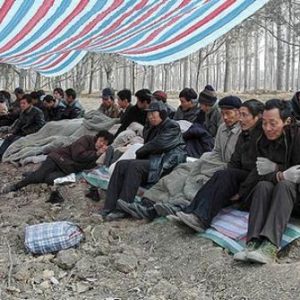
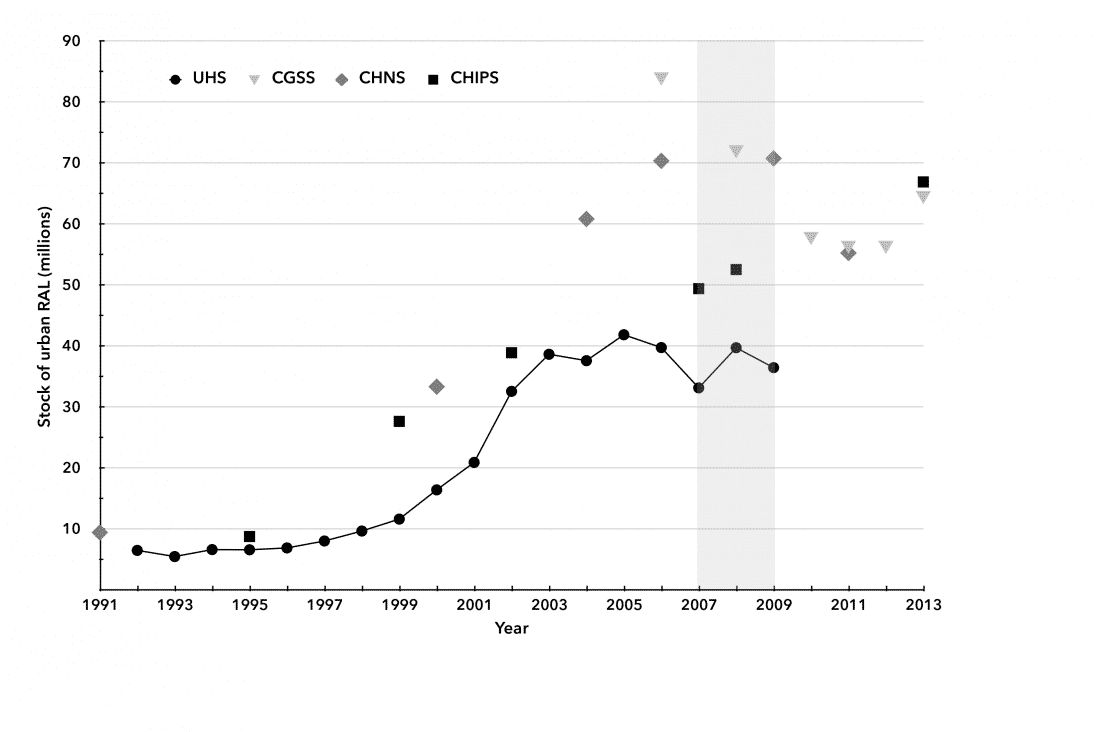
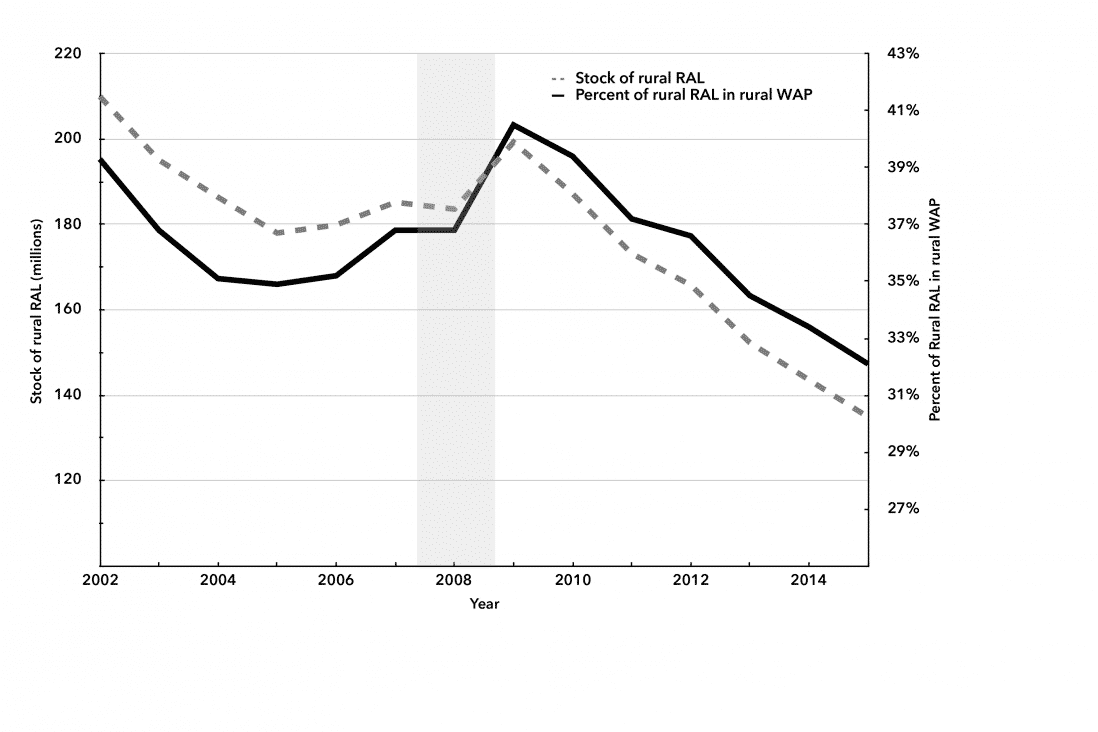
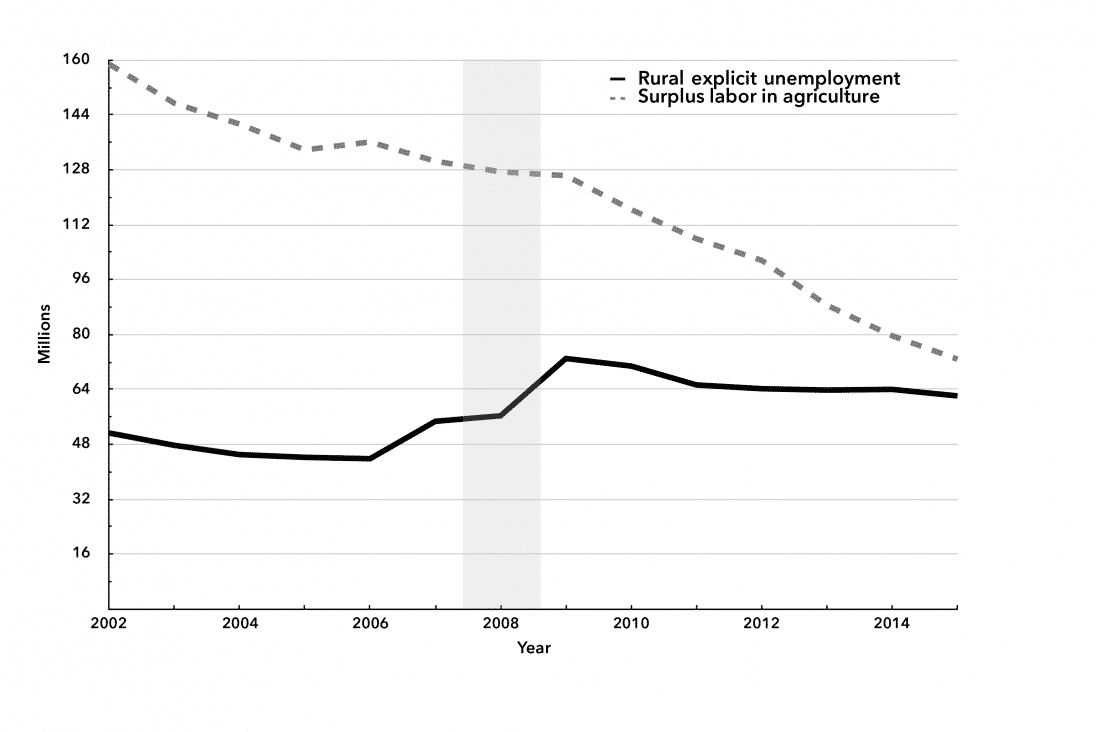
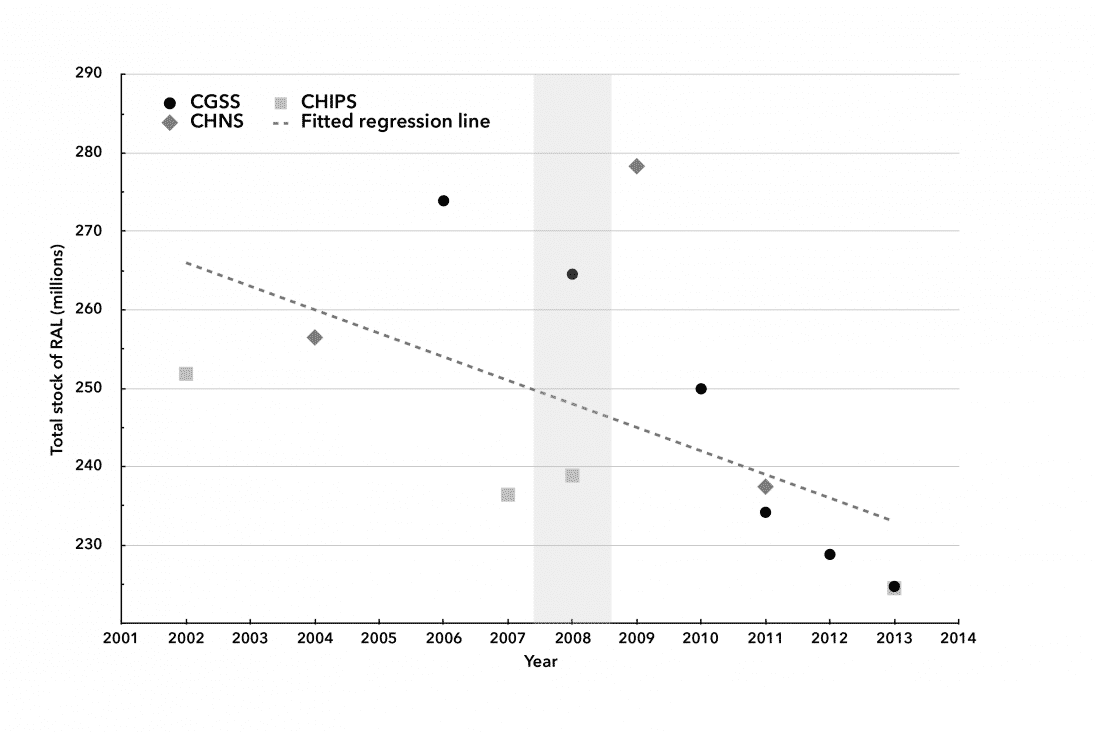
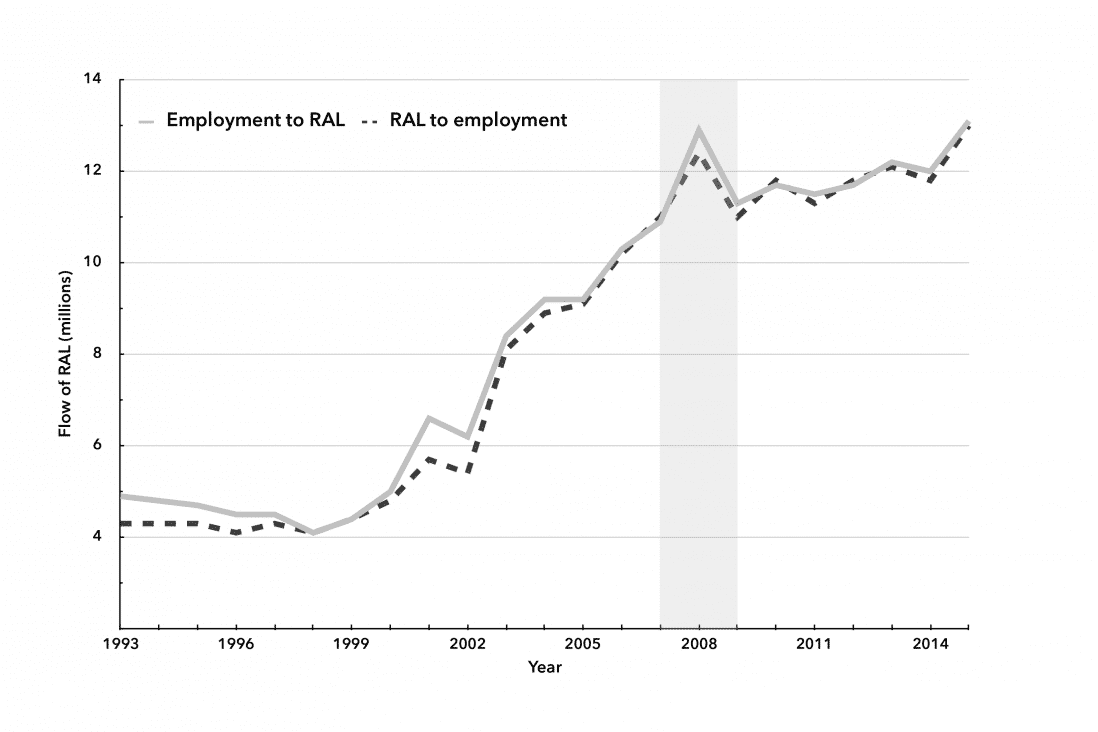
Comments are closed.